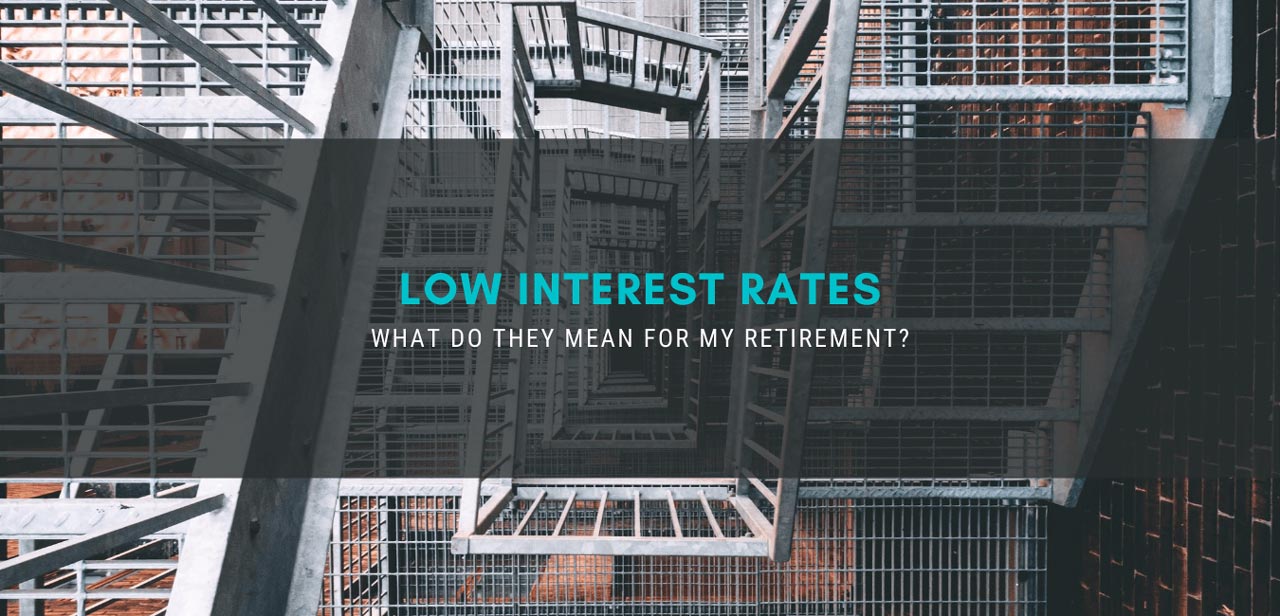Low interest rates may significantly impact your portfolio if you are retired or near retirement. If and when rates rise, it could make generating income more difficult.
There are ways to overcome this challenge with a carefully crafted investment plan.
In this post I’m going to breakdown the basics of creating a portfolio to manage a low interest rate environment.
In general, falling interest rates have been good for borrowers. Mortgage rates are at historically low levels and borrowing money is relatively cheap.
However, a retiree typically has less debt and more saved in conservative investments such as bonds. This is because as people get older and prepare for retirement, they use bonds to create stable and reliable income.
Because interest rates can have a large impact on retirement planning, the current low rate environment may cause nervousness.
Low Rates – Where Are We Now?
The current 10-year Treasury is paying less than 1.00%, the lowest it has been in recent history.
As shown below, since the early 80’s, we can see a gradual decline in bond yields over the past 40 years to where we are now – close to 0%.
Common sense might tell us that interest rates have very little room to fall further and are more likely to increase in the future. This is important for retiree’s since bonds, in general, are negatively impacted by rising interest rates.

In short, when interest rates rise the value of bonds decrease. This is because bonds and interest rates have an inverse relationship.
It is difficult to know what the next 20-30 years will look like when retirement planning and this can compound the problem. However, there are a few strategies a retiree can implement to help offset interest rate risk.
Diversification
Investments that are not so closely tied to the movement of stocks and bonds can provide diversity. This can include things like real assets, such as real estate and commodities.
Additionally, interest rates vary all over the globe. Solely focusing on the United States for bond and/or stock exposure limits potential and prohibits the ability to take advantage of global factors.
Defining Investment Goals
We firmly believe the goal of bonds should be to provide stability while stocks target long-term growth for protection of purchasing power.
With that in mind, retirees may want to consider investing in bonds with characteristics that tilt towards short-term and high-quality. For example, shorter maturities can help reduce interest rate risk.
Increasing Stock Exposure
Investing in stocks may help with interest rate risks in the future. However, increasing your stock exposure should be considered with caution since this can change the risk within your portfolio.
Implementing a strategy designed to take an offensive or defensive approach based upon a systematic set of rules can help manage that risk.
Bringing it Together
Nobody knows exactly where rates are headed in the future.
So called “experts” have been predicting rates will rise while they continue to drop over the past several years. So, the best thing a retiree can do to prepare for low interest rates heading into and through retirement is have a plan and avoid putting all their eggs in one basket.
Of course, each investor has unique circumstances and should carefully consider how to construct their portfolio for the future. This is not a blanket recommendation to invest in certain assets or strategies.
